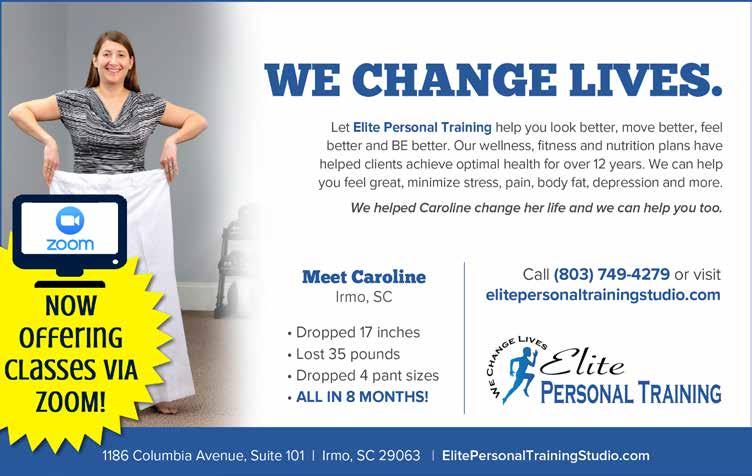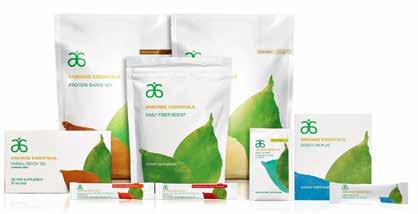
3 minute read
BODY GRATITUDE
Body Gratitude Being Thankful Empowers Our Workouts
jacob lund/AdobeStock.com
Advertisement
by Marlaina Donato
Exercise is crucial to preventing and managing cardiovascular disease, diabetes, depression and many other health conditions, but staying motivated to maintain a routine can sometimes be challenging, even for fitness devotees. Cultivating an appreciation for the way our bodies carry us through life can turn what may have seemed like a humdrum workout into something special. Research shows that a gratitude practice fosters patience, encourages self-care and nourishes self-discipline, especially when there is temptation to reach for another slice of pie.
Appreciation in Motion
“When we’re appreciating ourselves, we open the floodgates to joyful movement and freedom,” says personal trainer Katie Hunt, in Milwaukee. “What if today were the last day I got to run? This question forces me to appreciate every little thing my body can do and minimizes the focus on what I dislike doing. Suddenly, running feels like a gift instead of a task.”
During pandemic restrictions, a socially distant power walk with a friend can get the blood moving and shift perspective. “Something about feeling my heart pounding, a cool breeze after I first break a sweat and the ability to share authentically with a close friend at the same time reminds me of both my powerful mind and miraculous body. How can I not be grateful?” asks Andrea Stern, owner of the Satori Yoga Studio, in San Francisco. Her thankful intention is carried into each yoga session. “I encourage students to bring a sense of gratitude to the mat with them. Before the class begins, I ask folks to connect with the present moment and to check in with themselves.”
Motivation Through Affirmation
Using daily affirmations—simple sentences written or spoken aloud—is a wonderful way to infuse exercise time with positivity. Leaning into a challenging asana or doing one more lap in the pool with self-affirming intention can snuff out self-criticism. “Moving your body is not a competition. You don’t have to prove yourself or your ability to anyone. Practice feeling grateful for how your body can move, starting with your heartbeat and breath,” says Sofia Angelina Marcus-Myers, an intuitive energy worker and portrait photographer in Portland, Oregon. Healing self-portraiture and dedication to daily affirmations propel Marcus-Myers through chronic pain and help her to see the body as a sacred vehicle. “Affirming your body is a practice, and sometimes it will feel awkward, absurd or
tedious. Do it until you feel more comfortable affirming yourself, and then keep doing it.”
Calling a truce with body imperfections can help us feel more comfortable in our skins, something that can go a long way. For Hunt, shifting perspective inward is key. “What if we all stop and imagine being on a desert island? What would your perfect workout, body and life be like if there were no outside influences?”
Pain and Compassion
Living with discomfort makes exercising challenging, but learning to respect the body’s rhythms and limitations can be beautifully empowering. “I love the quote, ‘Unless your compassion begins with yourself, it is incomplete,’” says Stern. “Taking a class together (even virtually) gives us a sense of being in this together. When we breathe, stretch and grow together through our practice, it helps us to appreciate where we are on any given day.”
For Loolwa Khazzoom, a Seattle-based author and musician, it’s all about surrender. “Don’t fight your pain; dance with it—literally and figuratively. Dance from your bed. Dance in your head. Dance wherever and however it’s comfortable.” As the founder of Dancing with Pain, a wellness company that teaches a natural approach to pain relief through movement, Khazzoom says, “Our consciousness naturally goes to the places in pain and overlooks the places that feel good. Those places are quite literally our pathways to wellness.”
She recommends focusing on painfree areas of the body with the joy, power, harmony and other sensations that come from moving to enjoyable music, noting, “As we inhabit those places with our entire beings, there is less and less room for the pain, to the point that it may vanish altogether.”
Marcus-Myers brings the message home with, “It isn’t your body’s purpose to be anyone’s ideal. Your body is an Marlaina Donato is an author and composer. Connect at AutumnEmbersMusic.com.







